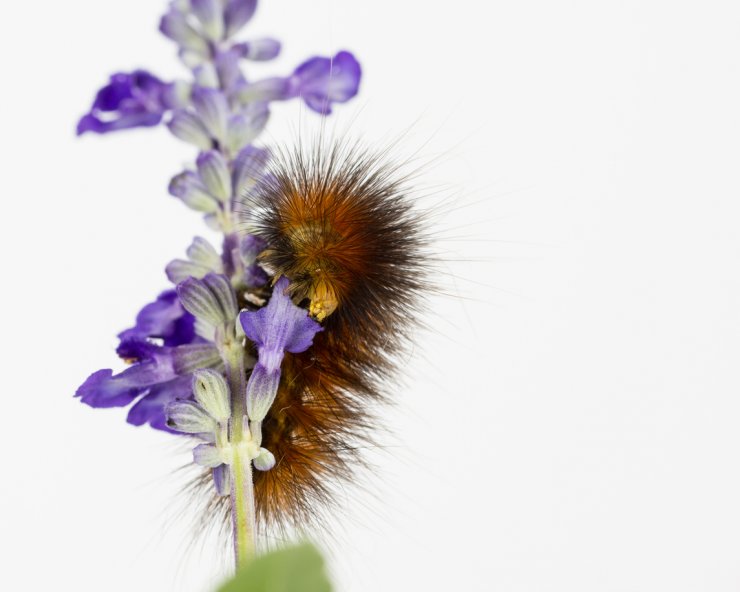
Caterpillar eating flowers of sage plant
Though pests don’t often bother sage plants because they have a strong smell, it’s a good idea to know about potential pests. Left unchecked, they can damage and destroy your precious sage plants. Keeping a close watch on your plants during regular daily inspections will help you spot any pests before they can do irreparable harm.
Spot the Symptoms of Sage Plant Pests
Check leaves and stems for these symptoms that come from pests on the prowl.
On sage leaves and stems
| Symptom | Pest |
| Holes in foliage; honeydew (white, sticky residue) | Aphids and white flies |
| Holes in foliage; white leaf scars; black excrement balls | Thrips |
| Leaf stippling, yellowing; webs on bottom of leaves | Spider mites |
| Ragged holes; slime trails on leaves | Slugs |
| Defoliation | Caterpillars |
| Leaf wilt; brown or deformed leaves; weakened stems | Red and black flat mites |
How to Treat Pests on Sage Plants
Here are some proven ways to get rid of pests on your sage plants. Choose the best treatment for the type of pests invading your plants.
- Remove old flowers. Leaving rotting flowers can invite pests and disease.
- Pick off the pests. Use your garden gloves to remove the pests by hand. After removal, destroy pests by drowning them in a bucket of soapy water or crushing them with your foot. Handpicking isn’t efficient or practical for very small pests, but works well with larger pests such as the slugs and caterpillars. You can also leave out “traps” like a slice of grapefruit, which is especially loved by slugs, and then remove them in the morning.
- Apply insecticidal soap. Insecticidal soap is organic. The potassium salts in insecticidal soap help remove an insect’s protective waxes, causing destruction of insect membranes and killing them. Insecticidal soaps are particularly effective on smaller pests such as aphids, spider mites, and black and red flat mites. Mix the soap with water to create your solution, and apply directly to insects on any plants. While insecticidal soap is less apt to affect other organisms, certain plants might be sensitive to the soap and can suffer leaf burn.
- Make your own pest spray. You can make your own pest spray with benign materials. Mix 1 tablespoon of baking soda, 1/2 teaspoon of a mild dish detergent, and 2 1/2 tablespoons of olive oil in a gallon of water to make a solution that will repel all kinds of bugs, as well as a fungicide for mildew on the sage plant leaves. Shake it well in your bottle before spraying and repeat every week for it to be continuously effective.
- Control the culture. Sage plants can resist pests very well on their own, provided you keep them healthy. Avoid overwatering, as that weakens the plant. Let soil dry out between waterings. Over-fertilizing will also weaken the plant, so use a light hand when applying fertilizer. Provide ample space around the plant and remove weeds, leaves, and debris from under the plant to allow plenty of air circulation. Also, remove dead blooms, and prune dead or diseased plant parts.
Do pests attack your sage plants every year? How do you handle removing them—and even preventing them in the first place? Please tell us how you treat your sage plants to avoid pests.


 Previous
Previous


I have white sticky residue on the leaves and stems of my Texas sage plant. Not sure what it is or how to get rid of it.